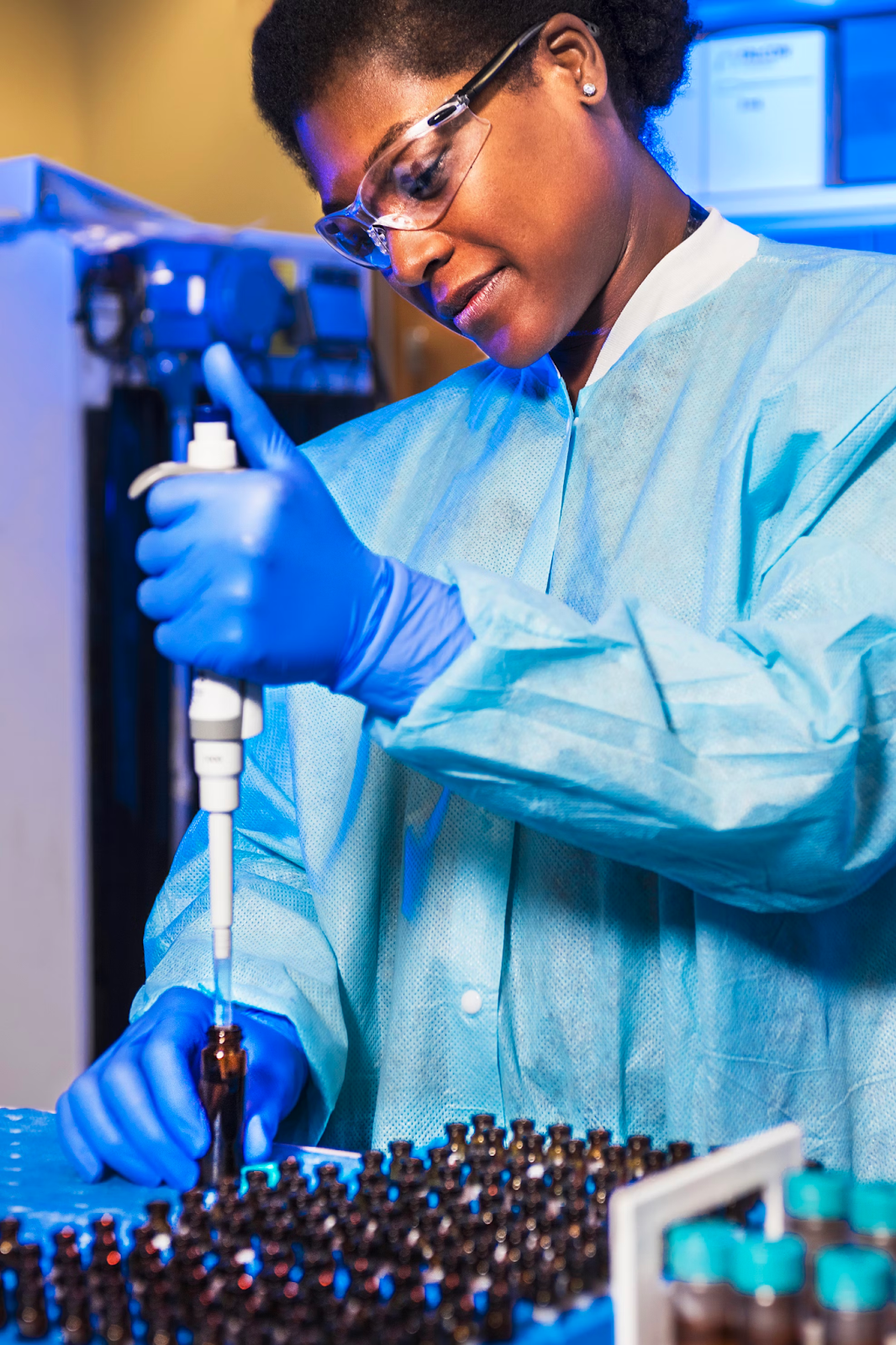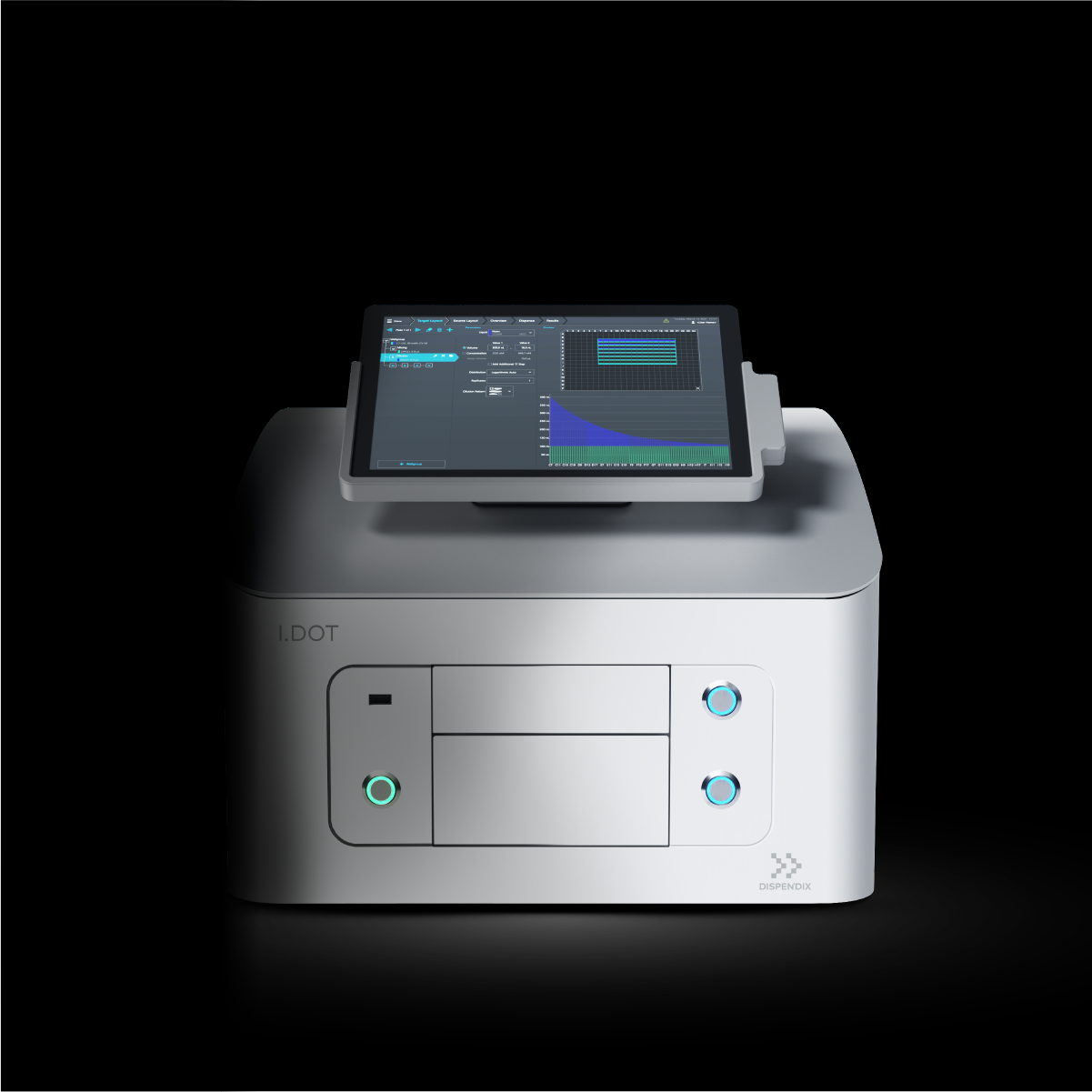We’ve all used a pipette – it’s one of the most extensively used tools in biology, chemistry, and medical laboratories and has been around for decades. In this time, pipetting has evolved dramatically from the old-school days of mouth pipetting. However, the manual versions we know today still have their challenges, specifically in maintaining accuracy and consistency and avoiding repetitive strain injury (RSI).
Pipetting automation technology offers a potential solution with improved accuracy, throughput, and safety. Here, we will explore the evolution of pipetting, delve into the key innovations in pipetting automation technology, and discuss what this means for the future of pipetting.
The Evolution of Pipetting
Back in the early 20th century, scientists turned to mouth pipetting, a method that involves using the mouth to draw liquid into a glass tube before transferring it elsewhere. While innovative for its time, the risks of mouth pipetting soon became clear. Mouth pipetting posed risks of inhaling or ingesting harmful substances like toxins and pathogens. It also raised concerns over research integrity, as accurately measuring liquid volumes was challenging, and the risk of contamination was huge1. With safety and precision in mind, the lab world evolved, introducing glass pipettes paired with rubber bulbs as a safer and more reliable alternative2.
Then, in the late 1950s, Heinrich Schnitger developed the first mechanical air-displacement pipette3. This breakthrough enhanced both the accuracy of liquid handling and the reliability of research results, laying the foundation for the widespread use of mechanical pipettes in modern labs (Fig. 1). These pipettes continued to evolve with the needs of researchers, which saw the development of multichannel pipettes for increased throughput and electronic pipettes for improved accuracy and ergonomics4.

Figure 1. Manual air-displacement pipettes are still widely used today. (Source)
Fast-forward to the past twenty years, and we’ve begun to witness the rise of pipetting automation technology, including semi-automated pipetting workstations and fully automated liquid handling systems with robotic arms. Pipette automation offers unparalleled precision, safety, software integration, and efficiency in line with the rapid pace of research and development.
Key Innovations in Pipetting Automation Technology
Pipetting automation technologies have come with several key advantages over traditional manual pipetting, advantageous for users as well as for the accuracy and validity of research findings. These include:
- Improved Accuracy and Precision: Automated tools can measure volumes and dispense liquids far more accurately than the average researcher. Not only that, but these liquid handling systems are also less prone to error, helping scientists achieve more reliable, reproducible results5. Minimizing errors saves valuable research time and resources, making them more cost-effective in the long run. Advanced automated dispensers, like the I.DOT Liquid Handler, further improve accuracy and precision with innovative liquid class calibration and liquid sensing capabilities.
- Increased Throughput and Speed: Pipetting automation technologies usually come in multi-well formats, meaning they can process many samples in parallel, a game-changer for increasing scalability6. This has proven extremely handy in high-throughput screening (HTS) applications where efficiency is key7. By integrating automated liquid handlers, labs can significantly lighten the load of repetitive, time-consuming pipetting tasks. This allows skilled research staff to redirect their focus to other tasks, making the most of valuable time and expertise in fast-paced research environments.
- Enhanced Safety and Ergonomics: Automated liquid handling is unrivaled in terms of safety for limiting exposure to hazardous solutions. These systems also tackle the ergonomic challenges of repetitive manual pipetting, curbing the risk of RSI and chronic pain.
- Data Integration and Connectivity: Automated appliances don’t have to be standalone systems; they can be seamlessly integrated with other laboratory instruments, laboratory information management systems (LIMS), and advanced software for streamlined, secure data integration and efficient workflows. For example, The G.STATION’s DISPENDIX Cloud Platform allows scientists to remotely view the status of a run, build protocols and processes, and share these for easier collaborations.
The Future of Pipetting
Looking forward, pipetting automation technologies are set to continue advancing research workflows. Reaction miniaturization, which involves substantially reducing the scale of experimental setups while maintaining accuracy and reproducibility, is achieved by lowering reaction volumes in smaller well plates or nanowells and using automated dispensers like the I.DOT Non-Contact Dispenser for accurate liquid handling (Fig. 2)8,9.

Figure 2. The I.DOT Non-Contact Dispenser facilitates accurate liquid handling in miniaturized assays.
In addition, we are seeing automated liquid handling systems transform the field of microfluidics, particularly through the advancement of non-contact microfluidic techniques10. Non-contact microfluidics refers to the manipulation of tiny amounts of fluids without direct contact, which is crucial in avoiding contamination and ensuring precision in experiments.
Moreover, the capacity to integrate cloud-based software with automated liquid handling systems is not only enhancing the efficiency and flexibility of experiments but also streamlining data management, standardization, and security, leading us towards more collaborative scientific research.
Conclusion
The evolution of pipetting from basic mouth pipetting to advanced pipetting automation technology marks a significant leap in laboratory practice. Advanced automated systems offer unparalleled accuracy, efficiency, and safety, streamlining research workflows. As we look ahead, integrating these technologies with cloud-based software and their application in areas like microfluidics and reaction miniaturization is set to continue facilitating ever-more collaborative and innovative scientific research.
Ready to revolutionize your pipetting workflows?
Meet the I.DOT Liquid Handler! Tired of the tedious, error-prone world of manual pipetting? We hear you! In this blog post, we explored the fascinating journey of pipetting technology, from the risky days of mouth pipetting to the cutting-edge era of liquid handling automation. Don't settle for the ordinary and mundane. Embrace the future of pipetting with the I.DOT Non-Contact Dispenser and book a demo today!
References
- DeLuca C, Gioeli RP, Yarm SD. Elimination of mouth pipetting in the tissue culture laboratory. J Tissue Cult Methods. 1980;6(1):21-23. doi:10.1007/BF01665900
- Swallow AJ. A New Type of Pipette for Radioactive Solutions. Nature. 1950;165(4189):249-249. doi:10.1038/165249b0
- Klingenberg M. When a common problem meets an ingenious mind: The invention of the modern micropipette. EMBO Rep. 2005;6(9):797-800. doi:10.1038/sj.embor.7400520
- Center of Excellence in Genomic Medicine Research, King Abdulaziz University, Jeddah-21589, Kingdom of Saudi Arabia, Pushparaj P. Revisiting the Micropipetting Techniques in Biomedical Sciences: A Fundamental Prerequisite in Good Laboratory Practice. Bioinformation. 2020;16(1):8-12. doi:10.6026/97320630016008
- Torres-Acosta MA, Lye GJ, Dikicioglu D. Automated liquid-handling operations for robust, resilient, and efficient bio-based laboratory practices. Biochem Eng J. 2022;188:108713. doi:10.1016/j.bej.2022.108713
- Tegally H, San JE, Giandhari J, De Oliveira T. Unlocking the efficiency of genomics laboratories with robotic liquid-handling. BMC Genomics. 2020;21(1):729. doi:10.1186/s12864-020-07137-1
- Roy A. High-Throughput Screening (HTS) Technology. In: Offermanns S, Rosenthal W, eds. Encyclopedia of Molecular Pharmacology. Springer International Publishing; 2021:787-799. doi:10.1007/978-3-030-57401-7_73
- Pereira SAP, Dyson PJ, Saraiva MLMFS. Miniaturized technologies for high-throughput drug screening enzymatic assays and diagnostics – A review. TrAC Trends Anal Chem. 2020;126:115862. doi:10.1016/j.trac.2020.115862
- Carstens C, Elbracht R, Gärtner C, Becker H. Opportunities and limits of cell-based assay miniaturization in drug discovery. Expert Opin Drug Discov. 2010;5(7):673-679. doi:10.1517/17460441.2010.488264
- Ortseifen V, Viefhues M, Wobbe L, Grünberger A. Microfluidics for Biotechnology: Bridging Gaps to Foster Microfluidic Applications. Front Bioeng Biotechnol. 2020;8:589074. doi:10.3389/fbioe.2020.589074